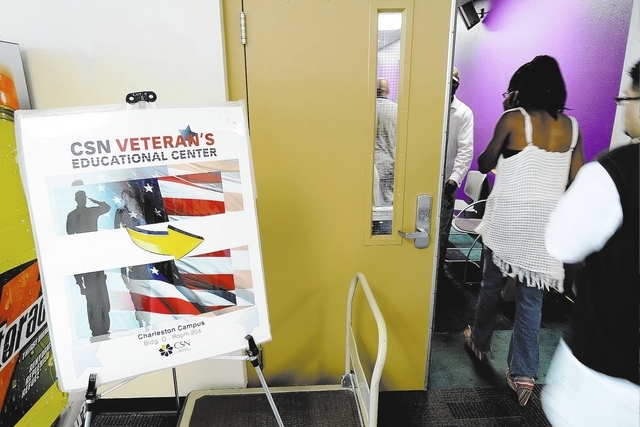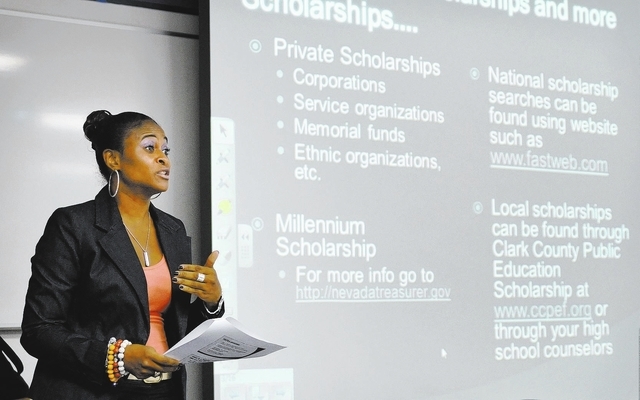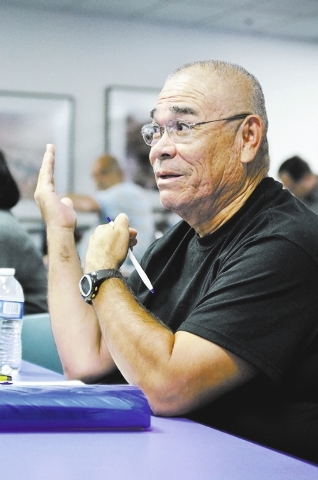Government programs help veterans train, find jobs



It’s been a long road to employment, but Yancy Louston is grateful for every step.
“When I was deployed, I learned a lot about myself and what I am capable of,” Louston, a former Army sergeant, said. “(After) being in combat over (in Iraq), I realized so much had changed in me, in a good way, but I didn’t know how the (civilian) world would relate to me again as another unemployed person.”
After 18 years in the military she made the move out of her comfort zone and into the ranks of the unemployed.
“I was worried I was too old, that the work I had done (in the military) wouldn’t be valued outside of the military,” Louston, 40, said.
She turned to the Veterans Retraining Assistance Program to get her out of her rut. After its inception in June 2012, the Veterans Affairs benefit has provided eligible veterans with 12 months of full-time training aid.
To enroll, veterans must be 35 to 60 years old, unemployed, not currently employed in a federal or state job training program and honorably discharged. For a full list of eligibility requirements, go to benefits.va.gov/vow/education.htm. The program is under review for extension through the end of 2014.
“I took some time to readjust and brush up my resume,” Louston said. “I sweated over my resume more than I did about going (overseas), if you know what I mean.”
The time off from her military career made her a little nervous, however, her fears were quickly assuaged by the many employment professionals, both military and civilian, who helped her transition into civilian life.
“It was good to build my confidence from thinking I wasn’t trained for anything other than the military to realizing I had a lot to offer due to my military background and all I’d gained (while) there. I’m ready to give my best to school and my employer, just as I have my entire (military) career.”
More than 140,000 veterans applied for VRAP and more than half of those were quickly enrolled in training programs. Training programs are considered vital to the employment of returning veterans as the Housing and Urban Development Department reports that more than 62,000 veterans are homeless on any given day because of some difficulties in fitting in to the workforce on their own.
Louston has seen a few of her comrades in combat drift to other states to find work, losing touch with their military family.
“It can be hard to adjust, but it’s not hopeless out here,” Louston said. “I’ve seen more help in Nevada than my friends are getting in (other states). You can tell this city loves its veterans, and that makes you feel like there’s a chance for a good future here. We who’ve served, we have shown we are willing to work hard.”
VRAP, a provision under the Veteran Opportunity to Work to Hire Heroes Act of 2011, has worked well for the College of Southern Nevada as well as the hundreds of enrolled veterans, said Vanessa Robledo, veteran’s education center coordinator.
“In regards to the VRAP program we have several veterans excited to get back into the workforce,” Robledo said. “They also serve as role models to our younger veterans on campus.”
Those considering enrolling must meet with an academic counselor and are given 24 weeks to submit an official copy of college transcripts and military training. They also can continue on to a career coach and other programs to make their transition into the work world successful.
“We currently have 1,453 veterans enrolled in our institution for the fall 2013 using VA education benefits,” she said. “Out of the 1,453 veterans, 295 of them are VRAP students.”
The majority of returning veterans seems to naturally gravitate toward the technology fields.
“We have a larger group of VRAP recipients pursuing computer courses,” she said. “I feel this helps them be up to date with technology and helps them qualify with current employment opportunities.”
As of June there were approximately 687,000 unemployed veterans, according to the veteran support website dosomething.org. But VRAP seems to be working. The unemployment rate for veterans went down more than 1 percent from June 2012 to this year.
The Nevada Employment, Training and Rehabilitation Department is dedicated to veterans through its Veterans Employment Services.
Through its website, detr.state.nv.us, highly trained veteran representatives assist job seeking veterans with their resumes and other potential employment road blocks for returning military personnel. Placed at JobConnect offices, these representatives have received specialized training by the Labor Department specifically for employment assistance for veterans.
James Holter took his resume to a recent JobConnect workshop.
“I thought I had my resume down pat,” the 35-year-old Army reservist said. “I was going out filling out job applications, handing my resume out at job interviews, but nothing was coming in as far as potential (work).”
After sharing his concerns with a JobConnect veteran representative, he made some changes to his military-heavy resume.
“I knew I was coming out of the (military) with some skills, but I wasn’t sure how to say that on paper, make it work for me here at home,” he said. “They were really helpful.”
The Veteran Employment Service provides one of the highest quality job referral and placement systems in the country, according to its website. They work in conjunction with eligible employers, offering incentives to offset costs related to hiring and possibly retraining returning veterans.
They also are connected with the national job bank to assist veterans who may be able to find work out of state for their specialized field.
The DETR also has a Career Enhancement Program that conducts classes and on-the-job training for veterans who qualify as well as retraining opportunities for those who may have been out of the labor market for some time, something Holter has looked into since making a stop at a JobConnect workshop.
“There’s a lot more support out here than I thought there would be,” he said. “I plan to take advantage of a few of these things until I secure a good job. There’s a lot I can do.”












